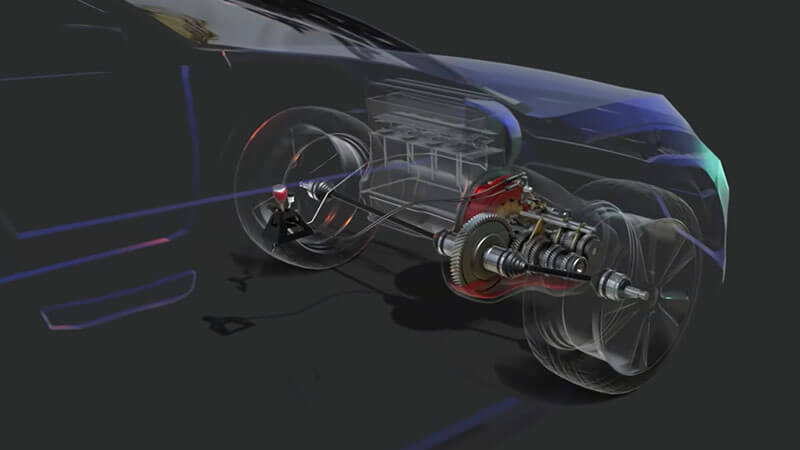A car’s transmission is among its most complex components. The transmission takes power from the engine and sends it to the wheels, allowing the vehicle to move forward. Besides, it regulates the power going to each wheel, allowing the vehicle to maintain a constant pace.
Vehicles with manual transmissions are frequently referred to as “stick shifters“. When driving a car with a manual transmission, the driver shifts gears manually as the automobile accelerates and decelerates. When a car has a manual transmission, the driver can feel more connected to the mechanism of the vehicle.
To learn more about manual transmission cars like how they work, how they differ from automatic transmissions, their benefits, and drawbacks, as well as, which things to avoid in manual transmission, read the following article.
How Does the Manual Transmission Work?
Manual transmission cars work completely differently from auto-shifting cars. There is so much more to do when riding a manual-gear car than an auto-gear car.
Likely, gear shifting in a manual transmission entails the following:
- By depressing the clutch pedal, you disengage the clutch disc from the pressure plate and flywheel by releasing the bearing and diaphragm spring. The power plant and gearbox are now separated.
- When the gear shift is in the first position, the selector fork is pushed so that the collar connects gears one and two contacts with gear one.
- When driving, the left foot lightly presses the throttle pedal while simultaneously releasing the clutch pedal. The right foot then presses the gas pedal more firmly and releases the clutch until it is disengaged. The engine and transmission are now entirely connected, and the vehicle is in first gear and moving.
- To switch gears, the procedure is repeated. The right foot is off the accelerator while the left is simultaneously pressed down to release the clutch. The collar is pulled out of the first and engaged with the next gear after the gear selector is switched to the second position. The ideal situation would be for the engine speed to equal the gearbox speed when the clutch is released, resulting in a seamless transition. The remaining gears go through the same procedure.
- To stop, press the clutch until it clicks, then shift into neutral to disengage the gears. Rather than pressing the clutch to halt, let the automobile coast in neutral to protect the bearing operations.
Related: Jeep Grand Cherokee Vs. Honda Passport: A Comparison Guide!
Difference Between Manual and Automatic Transmission
The automatic transmission allows for automatic shifting between gears and speeds in a vehicle. A manual transmission car can be distinguished from an automatic by using three pedals (brake, accelerator, and clutch).
The driver makes manual gear shifts by depressing the clutch. In the same way, manual cars shift gears; automatics do so independently.
However, to properly understand how manual and automatic transmissions vary, here are each transmission’s benefits and drawbacks:
Manual Transmission Car’s Benefits
Here are some benefits of manual transmission cars:
- Fuel efficiency: Because manual gearbox cars have lighter, simpler engines, they are more fuel efficient than automatic transmissions.
- High engaging: The stick shift will be your best option if you want to be more involved with the vehicle. Drivers generally feel that manual gearboxes are more enjoyable than automatic ones since they involve more engagement and allow more joy while operating the vehicle.
- Better control: When driving with a manual transmission car, the driver can control which gear to use and when manual transmissions provide them more control over the car.
- Versatility: Manual transmissions are extremely common abroad, particularly in Europe and Asia. If you wish to drive a car internationally, having experience with a stick shift is beneficial.
- Price: Car manufacturers can often save money by opting to equip their vehicles with manual transmissions. Manual transmissions may increase the resale value of a car because, even though fewer consumers are familiar with them, they are often preferred by those looking for a sport or performance vehicle. As a bonus, manual transmissions have lower maintenance and repair costs.
Manual Transmission Car’s Drawbacks
Here are some drawbacks of manual transmission cars:
- Problems finding a vehicle: Unfortunately, manual transmissions are no longer conventional on most new cars sold in the United States. As a result, you’ll be picking from a small pool of options or considering used models.
- Complications with driving: Stick shifts are less common, and many drivers lack the necessary skills. A manual transmission may not be the best choice in situations where multiple people will be using the car, such as families with teenagers who have recently passed their driver’s license test.
- Not suitable for long commutes: Driving a manual car is a lot of pleasure, but you should consider whether or not it’s practical for your regular commute. While having complete command of the vehicle is appealing, long stretches of highway driving or frustrating stop-and-go traffic may leave you wishing you had opted for an automatic transmission.
Automatic Transmission Car’s Benefits
Here are some benefits of Automatic transmission cars:
- Less tiring: Cars with automatic transmissions demand less effort from the driver, making them more comfortable to operate for long periods.
- Convenient: The learning curve for an automatic transmission is lower for the average driver. Just floor it and go; there is no need to evaluate gears or change.
- Available: You have various options when shopping for a car because virtually every vehicle now manufactured in the United States features an automatic transmission.
Automatic Transmission Car’s Drawbacks
- More difficult to maintain: Compared to manual transmissions, automatics are more complex and may require more frequent maintenance.
- Less control: For drivers who want to be in control of their vehicle or are engaged in performance driving, investing in an automatic transmission might not be worth it.
Related: Hymer Revamps Camper Vans: Mercedes Vs. Fiat Chassis
Manual Vs. Automatic Transmission: Which One Should You Buy?
People often mistakenly believe that manual transmissions provide superior acceleration to automatic ones. But the truth is both manual and automatic transmissions are in fast cars, and speed itself is more significant than the transmission’s ability to keep up.
However, manual transmission automobiles are cheaper but require more work from the driver, whereas automatic transmission vehicles are simpler to operate and provide more comfort. Of course, there will always be exceptions to the rule, and the only way to know for sure is to give it a try.
Our Opinion:
A car with a manual transmission will provide more satisfying driving and last longer. The automatic option is the way to go if you care more about having a transmission that makes gear changes swiftly and smoothly than getting higher gas mileage.
5 Things to Avoid When Driving a Manual Transmission Car
While driving a vehicle with a manual transmission, never do the following.
1. Avoid holding the clutch for a long time
It’s not good for holding the clutch for long when driving because that causes more friction and wears down the clutch faster. Also, it will lengthen the rate at which parts need to be replaced, increasing your car’s total cost.
2. Avoid changing gears without depressing the clutch
You can seriously damage your car’s transmission if you do not use the clutch when shifting gears. A clutch’s primary role is to regulate the connection between the transmission and the engine. As the car tries to locate the spot of gears and engine speed, it may exhibit a sequence of jerky actions.
3. Never press the brakes without first using the clutch
Some people like to apply the brakes without pressing the clutch; however, this is dangerous for new drivers. More skill and command over the vehicle are required in such circumstances. If you apply the brakes without depressing the clutch, the vehicle will begin to shake.
4. Avoid shifting from first to second gear too quickly
According to experts, driving in second gear is recommended between 5 and 15 mph. This in no way suggests slamming on the throttle as soon as you turn the key. The gearbox’s lifespan will shorten if you constantly shift into second gear.
5. Never use the wrong gears and speeds
Using the wrong gear at the wrong speed damages the vehicle. You will experience car lag and hear the noise that a car would not typically emit. Your car’s transmission and engine are under stress, which makes this noise. Long-term damage to a car might result from driving continuously in the wrong gear.
FAQs
A manual transmission typically does a better job of delivering power from the engine to the wheels, allowing for quicker acceleration. Due to their less complex architecture, manuals often need less upkeep than automatic transmissions.
Transmissions with manual gears tend to be more durable than those with automatic ones. Keeping a manual transmission in working order requires significantly less maintenance than an automatic transmission and does not require the same kind of oil. In general, manual transmission cars have a longer lifespan than automatic cars of the same brand and model.
Due to the added complexity of the transmission, vehicles with automatic transmissions cost more than those with manual transmissions. Automobiles with manual transmissions are widely regarded as having superior fuel economy over automatic gearboxes, which use a torque converter to alter gear ratios.
Manual transmissions are more fun to drive because they require the driver to participate in the shifting process actively. Most people with experience driving a manual transmission find it challenging to switch to an automatic one.
Conclusion
In the past, manual cars were more reliable and had incredible gas mileage. But some newer vehicles have seen significant technology improvements that have made automatic transmissions more fuel efficient than their manual counterparts. Also, the fuel efficiency of certain newer automatics is better than that of some older manuals.
When it comes to dependability, though, things are less certain. It’s important to note that both manual and automatic transmissions are constructed to last by their respective manufacturers. Despite improvements, automatic transmissions require more frequent and costly repairs than manuals.


